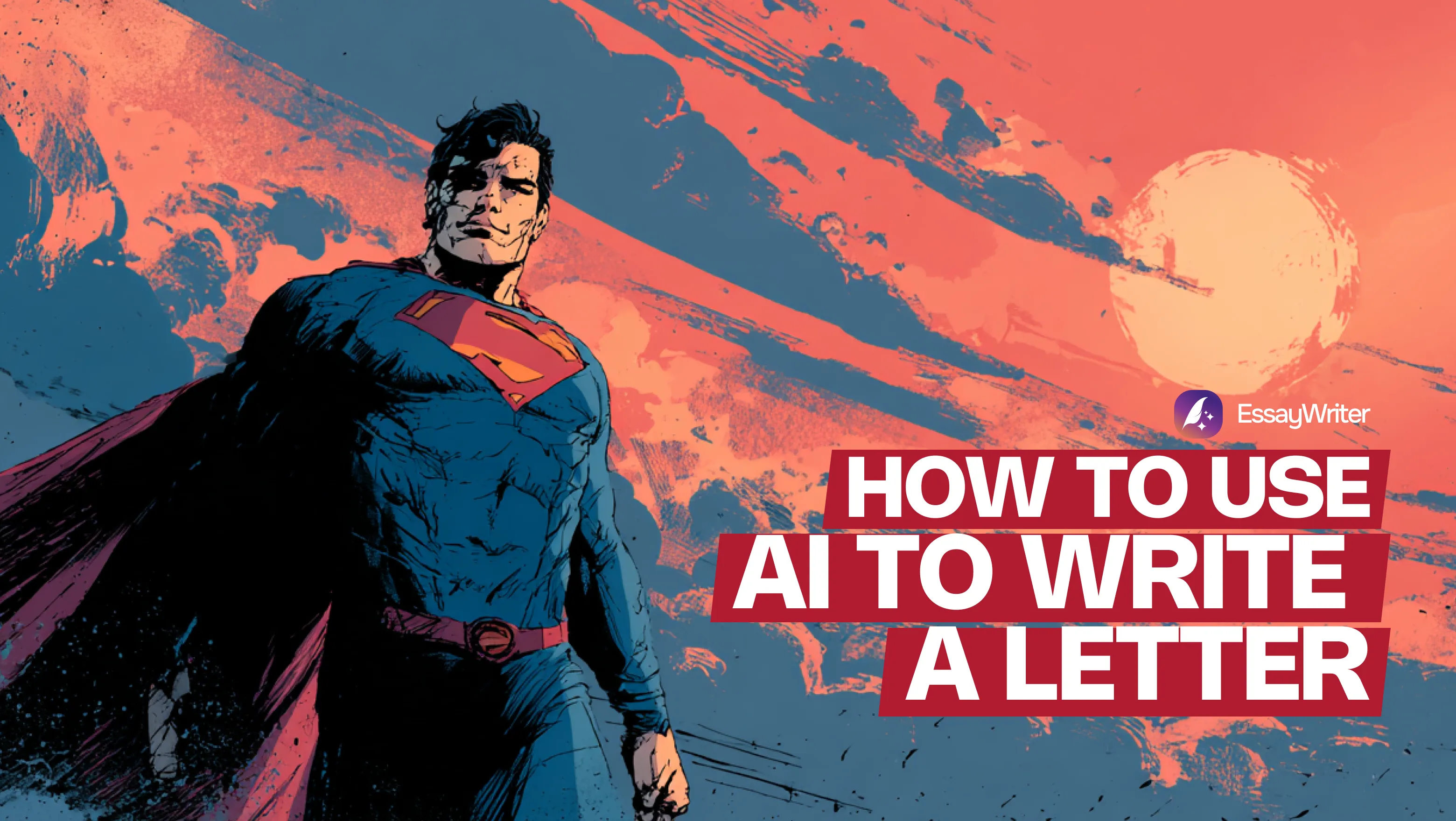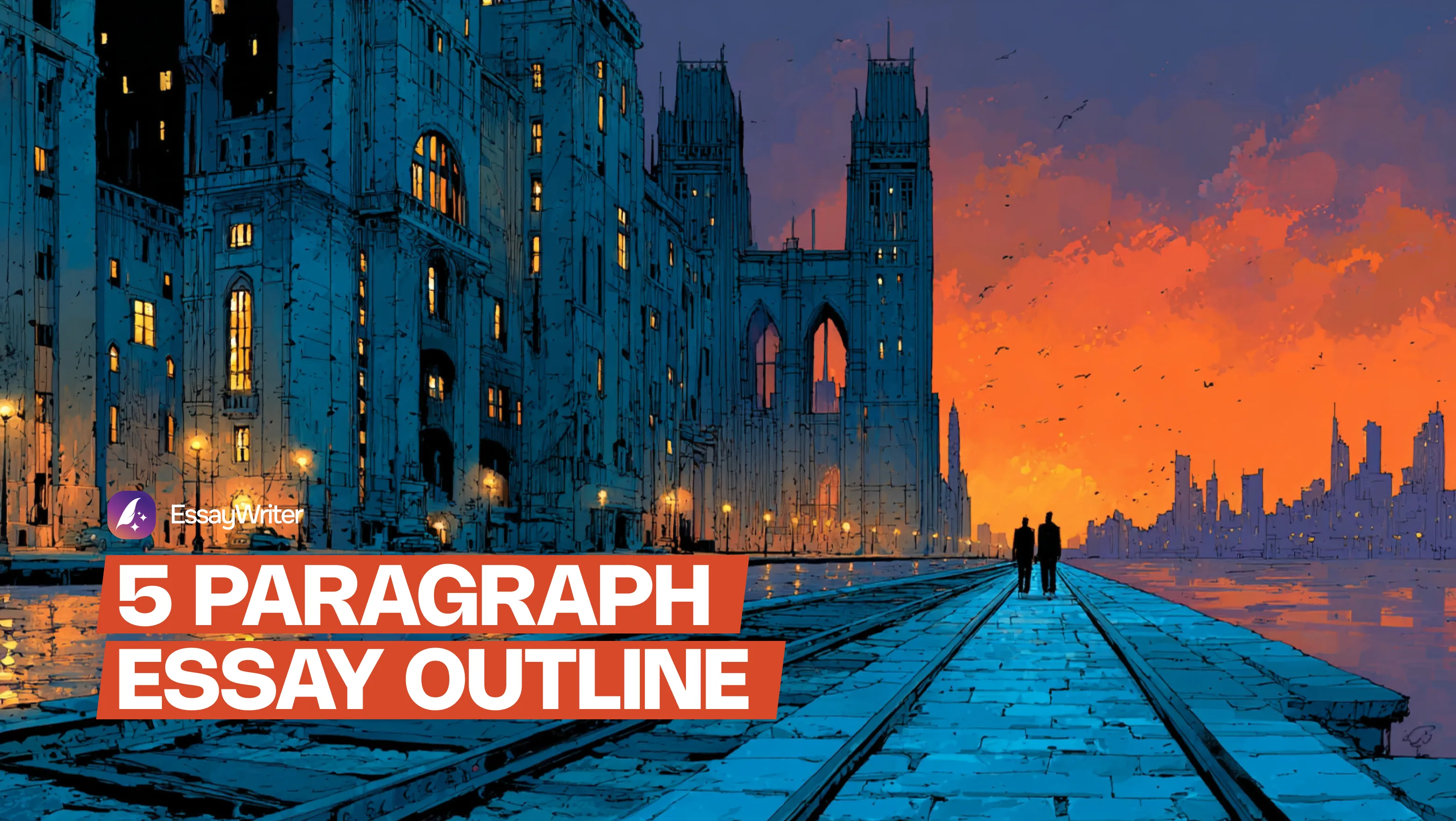Writing a letter often requires more precision than expected. A greeting can feel too formal, or the ending can fall flat. AI tools offer structure when the page feels scattered. They can bring rhythm to your sentences, guide the flow of your message, and suggest phrasing.
Here’s what to do:
- Select a writing platform that fits your goal
- Phrase your prompt with careful intent
- Generate a first draft to shape the core message
- Review the tone and adjust where needed
- Add personal cues, context, and voice
- Refine the language until it reads smoothly
This article tells you how to use AI to write a letter and walks you through each step. The method applies across letter types, academic, professional, and personal, without defaulting to clichés or stiff formality.
Make Every Word Count
Use EssayWriter to fine-tune tone, structure, and message clarity.
Try Now
How to Write a Letter Using AI
When you use AI to write a letter, start by picking a writing tool that fits what you need. Give it a clear, specific prompt, then let it create a first draft. Read it over, make changes, and add your own voice. This way, you write quicker without losing the tone or message you want.
Choose an AI Writing Tool That Fits the Task
The first step is selecting the right platform. Not every tool works the same way. Some focus on grammar and clarity, while others generate full drafts based on your input. The choice depends on the kind of letter you're writing: formal, casual, academic, or personal.
Look for a tool that gives you control over tone and structure. Free tools may help you get started, but paid platforms often provide better consistency and formatting.
- Define your goal: tone, purpose, length
- Test a few tools before committing
- Understand how do AI writing detectors work
Refine Your Prompt
This part sets the tone for everything that comes next. AI follows your lead, so the clarity has to come from you right away. Before you type anything into the tool, figure out the tone and purpose of the letter and who’s going to read it.
Be specific with your guidelines. Add why you’re writing, how formal or relaxed you want the tone to feel, and any phrases or points that must be included. Short prompts feel convenient, but they usually return generic outputs that sound like everyone else’s. Give it direction, and it’ll give you structure.
Mention these in your prompt:
- Letter type and purpose
- Who it’s for and how you relate to them
- Tone you're aiming for (warm, professional, casual)
- Essential details to mention
- Any phrases you’d like to keep in the final version
Evaluate the Draft
Now read what it gave you, but don’t skim. You’re checking whether this letter would land well with the person reading it. Most AI drafts sound polished at first glance, but that doesn’t always mean they feel right. You need to read like someone seeing it for the first time.
Look for lines that sound pulled from a greeting card or corporate email. Pay attention to the flow. If it feels like the tone jumps or the rhythm is too stiff, flag it. See if it reflects the feeling you want to communicate. It probably needs a fix if you wouldn’t say it out loud or write it that way to someone important.
Here’s what to look out for:
- Parts that feel too vague or too dramatic
- Lines that repeat the same thought
- Phrases that feel overly formal or generic
- Sentences that sound like filler
- Ideas that don’t clearly connect to the main message
Revise the Draft
Now it’s time to finalize it. This part makes the letter yours. Start by taking the AI’s structure and slowly replacing anything that sounds distant or recycled. Change the greeting if it feels stiff. Add a sentence that would only make sense to you. Rework the ending so it lands softly or clearly. Don’t rewrite everything, but stay alert for words that feel too perfect. People trust letters that sound considered, not flawless. Give it a rhythm and a pause. Let it breathe the way your voice would.
Change these:
- Phrases you wouldn’t normally use
- Sentences that feel like they’re trying too hard
- Lines that could be clearer or more grounded
- Places where a real memory or image would help
- Sections that need more flow
Key Methods for Personalization
At this stage of using AI to write a letter, you need to focus on the parts that make the letter feel like yours. Small phrasing, tone, or detail adjustments can shift the entire message. Most generic letters stay stuck in this stage, sounding fine but never quite landing. To move past that, lean into specificity and rhythm. You can explore ChatGPT alternatives for more tools beyond AI that help shape authentic writing.
- Start with a line you’d say in person
- Mention a shared moment or reference
- Use your own sentence rhythm instead of keeping AI’s structure
- Change the greeting to something warmer or simpler
- Keep contractions if they fit your voice
- Add a moment of pause where it matters
- Include one detail that feels honest and specific
- Avoid phrases that sound lifted from a template
- Reread after a break and listen for tone shifts
- End with a closing line that feels earned, not automatic

Final Thoughts
AI can relieve the pressure of a blank page, but the final voice still needs to be yours. With the right prompt and a few edits, you can create a letter that sounds clear, focused, and real.
For students who want more than just a draft, EssayWriter offers an essay writer tool and expert support to help shape letters and essays that connect.
FAQs
How do I Use AI to Write a Letter?
How to Write a Letter with AI?
- Michigan State University Ombudsperson. (n.d.). Writing an effective letter or email. Michigan State University. http://ombud.msu.edu/resources-self-help/for-graduate-students/writing-effective-letter-or-email
- BBC Bitesize. (n.d.). How to write a letter. BBC. https://www.bbc.co.uk/bitesize/articles/zkq8hbk
Recommended articles



